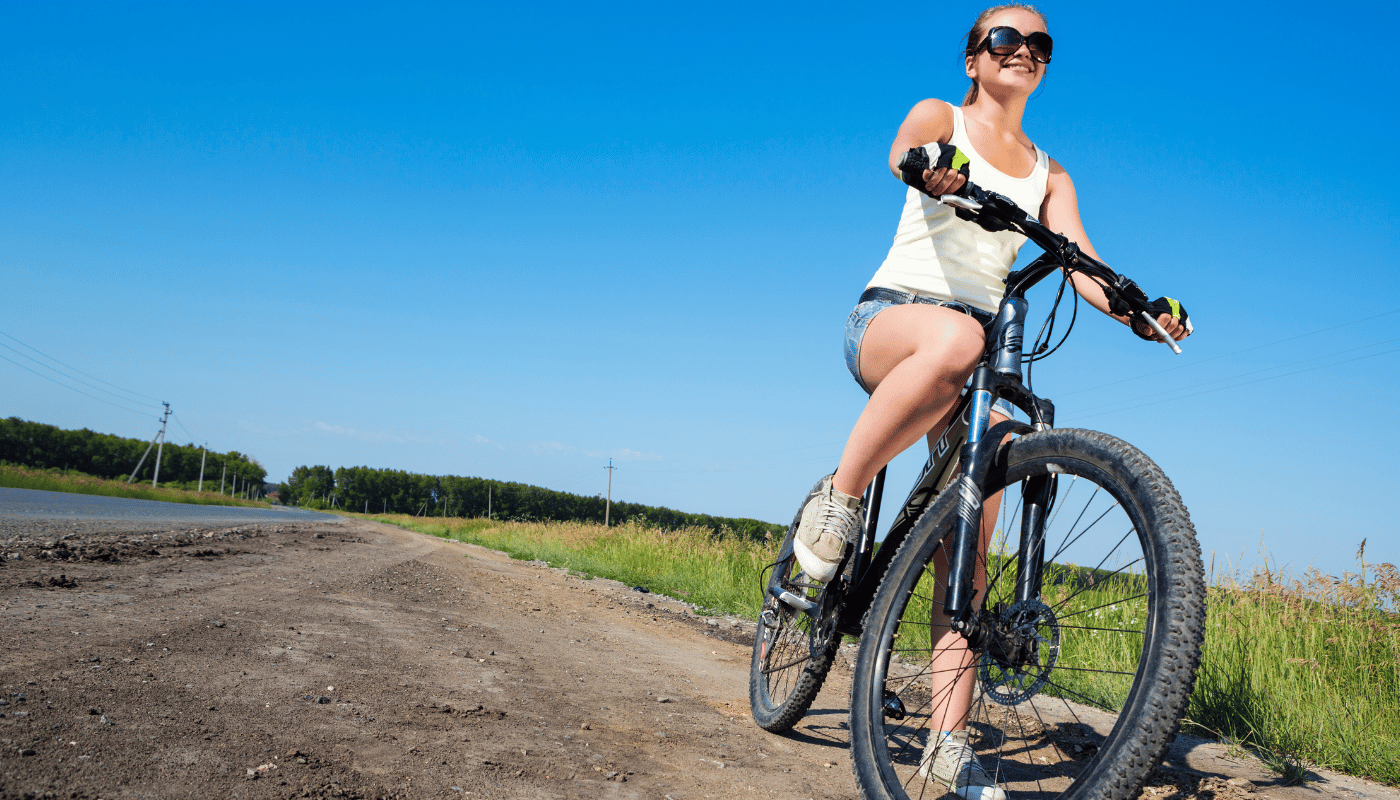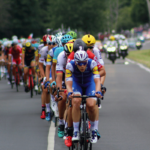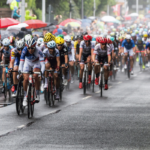Right. I’m half-expecting to be flogged with an inner tube for TMI, but let’s be adult and sensible and learn how to avoid saddle sores. If you are affronted by discussions of the derriere, go to the next post now.
In most of this series, I’m trying to cover the kind of information I really, really wish someone had just laid out for me before my first bike tour, because I trawled the internet for info and often came up with cryptic, embarrassed anonymous posts about stuff like chamois cream and whether you wear anything under your bike shorts. And while I have read enough to see that not everybody’s tush needs the same kind of TLC for long riding days, here’s what might help.
You’ll get them near your sitting bones, where there’s the most pressure, heat, and friction between skin and saddle. They start out as irritation, then can move on to a pimple- or boil-like thing and, for the final showstopper, open sores. My first touring day wasn’t so bad, but by the middle of the third, I was scouring pharmacies for something, anything to help. The last 20km of the day are endless when you can’t sit without making whimpering noises, and nobody likes a whimpering cyclist.
So: There’s a reason why you take two pairs of cycling shorts. Seriously, in an emergency, you can double up and the little bit of extra padding can help. You did pack cycling shorts, didn’t you? And tell me you’re not wearing underwear underneath (prudes of North America, I’m looking at you). The whole point of those shorts is to avoid abrasion and moisture. They’re not meant to be worn with knickers. They’re meant to be worn with:
Chamois cream! Not everybody likes/needs/has a fetish for this, but I am a proud supporter of the chammy. I would never ride more than three hours without it now. There are plenty of brands; I picked up Udderly Smooth on my third touring day and it saved my life. No, hang on, before you call the squick terror squad in, calm down. Take a deep breath. It’s just a slippery cream. Brand legend says it was used by dairy farmers to avoid chafing udders (on the cows, not on the farmers). You can slap it on your shorts or right onto your cheeky bits before you start riding… and enjoy that cold, squidgy moment when you sit on the bike. You forget about it soon enough… because you’re not in pain anymore! See what you just did? No, it won’t ruin your shorts. Go on, everybody’s doing it.
The road is the most comfy for your derriere. Your seat could also be giving you trouble. I cried “saddle sores” at a bike shop in Newcastle, and a very nice bloke (they’re all very nice when you’re a single touring girl) pointed my saddle tip about 5mm downwards. I never, ever would have thought that could make so much difference. I would describe the difference to you here, but I fear the editorial boys would wilt out of delicacy. Suffice to say the difference was noticeable. Saddle too high, wrong angle—change it up. That goes for the rest of the bike. I really appreciated having drop handlebars because they gave me lots of options for riding positions and shifting weight.
Roads matter. Many tourers stick to real roads, as in roads what cars use, but there are so many lovely cycle paths, nature paths… ahem, bridleways. Some of the national cycle routes in the UK are on bridleways. More than anything else, two words on my tour became my private screaming nightmares: headwind and bridleway. A couple hours on one of those with saddle sores on skinny tires and no ass that ever lived will ever be your friend again. Avoid long uneven paths if you’re sore.
Stand when you can. Some awesomely dedicated people will make rules like “stand 10 seconds every 2 minutes” or something equally retentive; I like to think that being on a bike is fun. Having said that, pushing yourself to stand a bit more will definitely take the pressure off your bits. Turning the logic around, you could also wait until you get saddle sores and use them as an incentive to learn how to climb standing.
If you’re getting/have gotten sores already, get out of your shorts as soon as you can when the day’s done, get clean, all that stuff. Don’t sit around in them at the beer garden if you can avoid it. I also discovered a cream that’s used for bedsores and nappy rash, and the smell of it will take you right back to when you were in diapers. Sudocrem is one brand I found in the UK; my mom used to use Penaten cream on me and my brother when we were babies, and it smells like the same stuff. It will heal those nasties faster than you would believe possible. Put it on at the end of the day or before you go to sleep. So yeah, that’s two creams. Chamois cream doesn’t really help you heal, it just takes out the friction while you’re riding.
Finally, don’t underestimate the power of preventative care. Saddle sores can take a serious toll on your cycling enjoyment, but with a bit of foresight and the right tactics, they’re more manageable than you might think. It’s all about finding what works best for you, so don’t be afraid to experiment and adjust your approach based on your personal comfort and experience. Remember, cycling should be an enjoyable adventure, not a painful ordeal. Embrace the quirks of bike touring and keep your ride as smooth as possible. Safe travels, and may your journey be free of saddle sores and full of joy.
Another read covering similar stuff but with much more authority and advice.
Markus is going to love me for all these long posts, I know; you wouldn’t think there’s that much to be said on the subject of saddle sores. But that’s until you get them. Horror stories welcomed in the comments below. I am thoroughly un-squickable.





